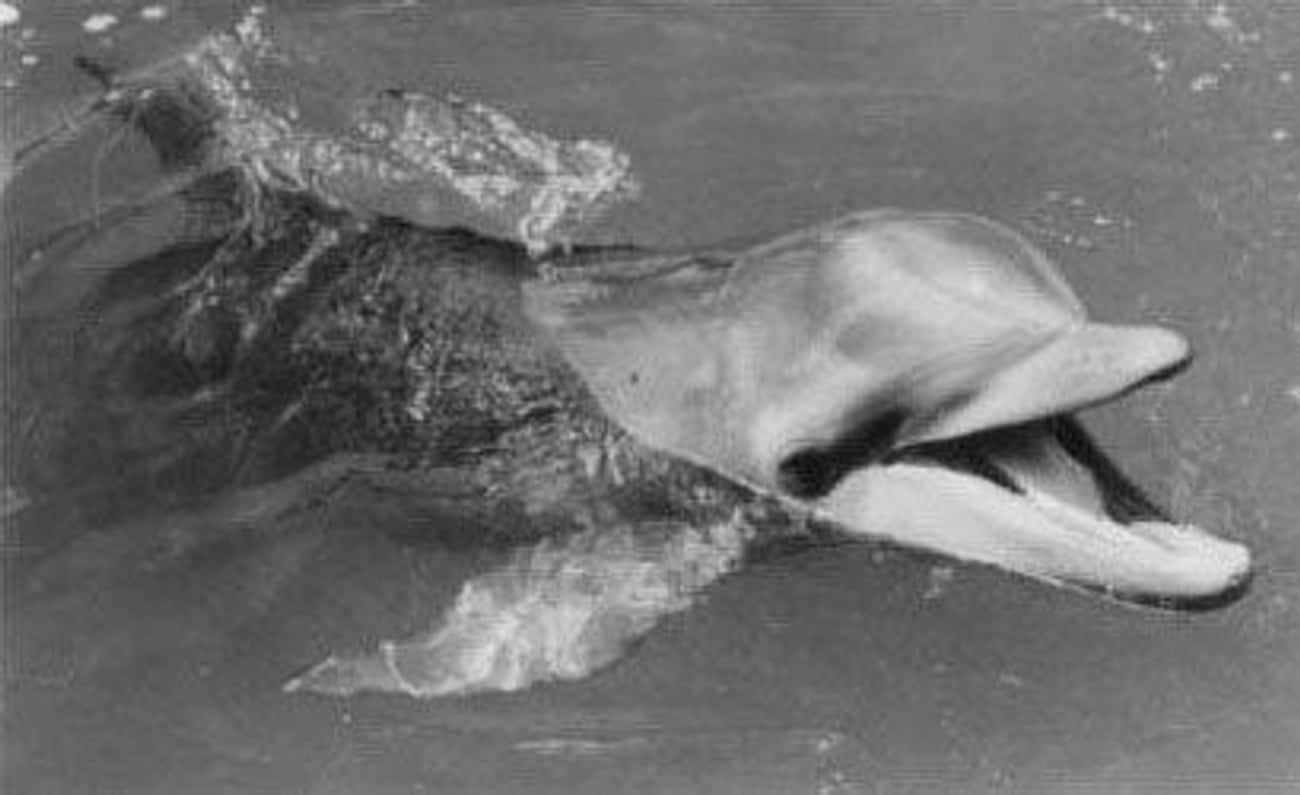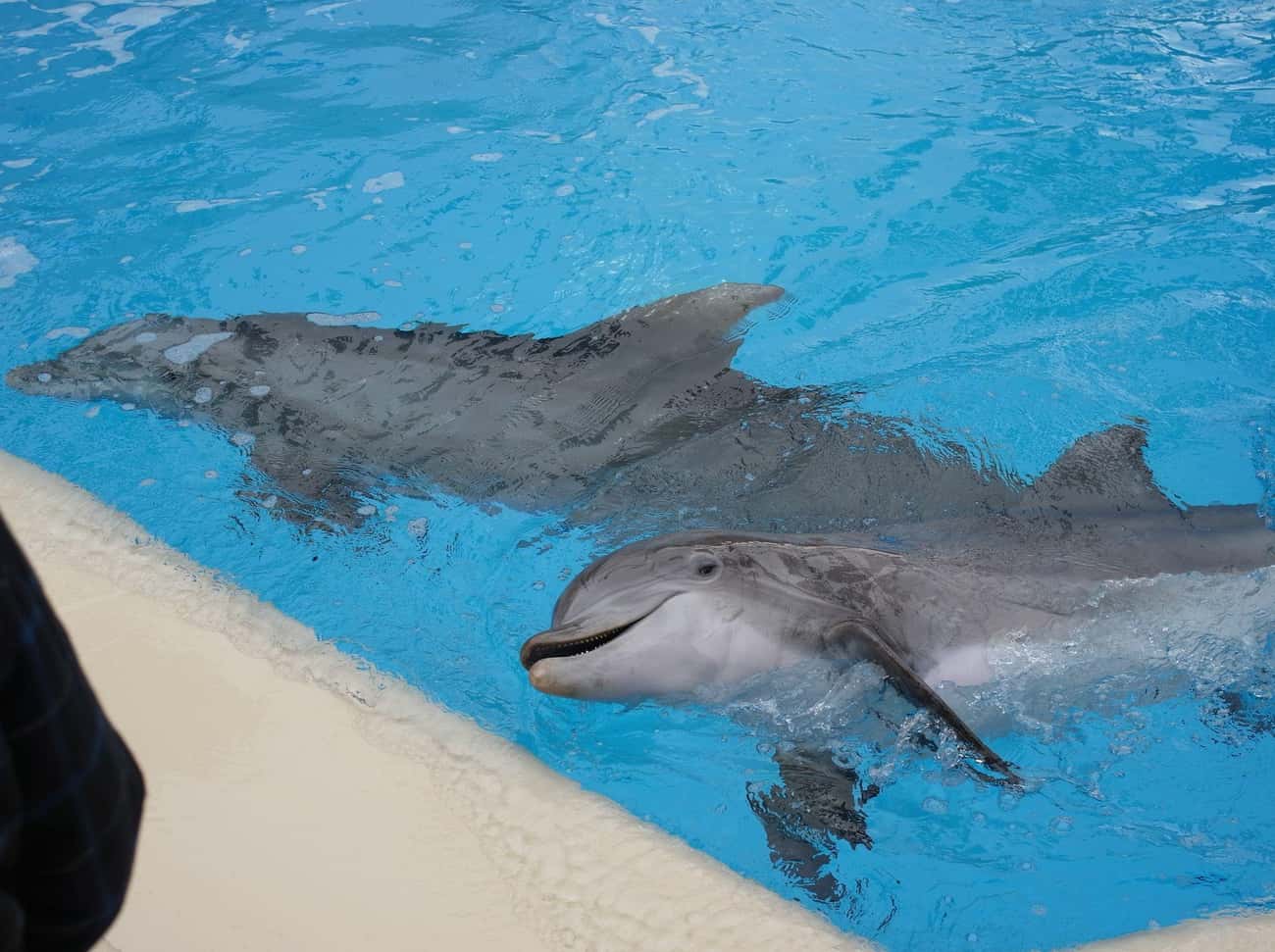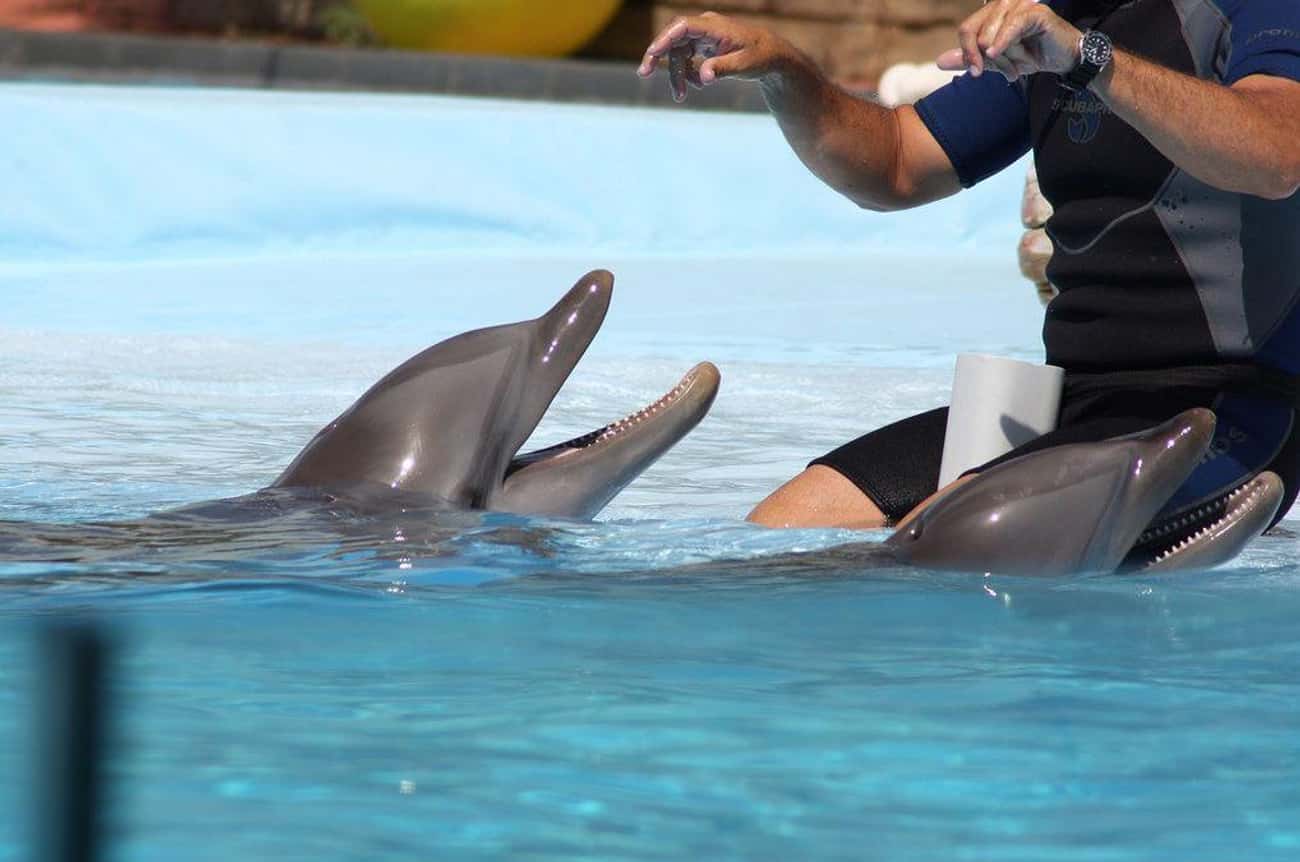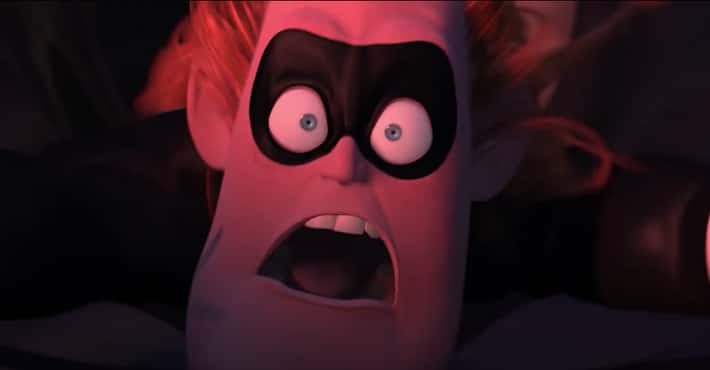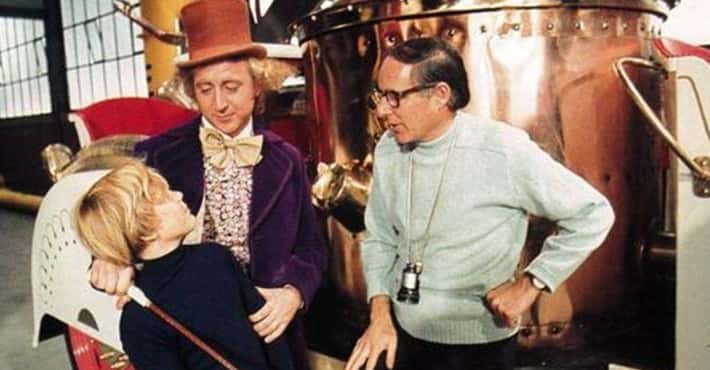Flipper The Dolphin Died More Upsettingly Than We Ever Knew, According To Her Trainer
The Dolphin's Name Was Kathy And She Was Taken From The Wild To Be Trained For Film
Photo: NBC Television / Wikimedia Commons / Public DomainKathy was a bottlenose dolphin trained for use in the '60s television show, Flipper. She was captured from the wild and taken into captivity to live the rest of her life as an entertainer for the series. She spent countless hours on set, but when her acting career was over, so to speak, she retired to a small chamber in the Miami Seaquarium.
It was here that she became miserable and depressed. When her trainer, Ric O'Barry, was called in to check in on the dolphin, she ended her life by swimming into his arms and holding her breath.
A Total Of Five Different Dolphins Were Captured And Used In The Flipper Television Series
Photo: Gordon Wrigley / Flickr / CC-BY 2.0While Flipper himself might have appeared to be one dolphin throughout the '60s television run of Flipper, the show cycled through multiple dolphins. Kathy, the dolphin that ultimately took her own life, was the primary dolphin of the show, yet only one of five dolphins who starred in the series. All five dolphins were taken directly out of the wild and trained to act for entertainment purposes.
The dolphins used were mostly female, as they are less aggressive and tend to be free of bodily disfiguration from skirmishes with other dolphins. The show was produced in cooperation with the Miami Seaquarium, and the Seaquarium hosted a variety of accommodations for the multiple dolphins who played the part, such as their set locations and pens.
Flipper Died By Refusing To Breathe While In Her Trainer's Arms
Photo: Pedro Lozano / Flickr / CC-BY 2.0Kathy the dolphin AKA Flipper ended her life with a definite statement. After the show's completion, Kathy was kept in an isolated pen at the Miami Seaquarium. Kathy had been showing signs of sickness when her captor and trainer, Ric O'Barry, was called in to examine her. When he arrived, he realized Kathy was much sicker than anyone had expected her to be.
She swam into his arms and stopped breathing completely - she took her last breath and held even after her trainer grabbed her to hold her. When he let her go, she sank to the bottom of the tank, and when he pulled her to the surface, she was dead.
Behind Their Smiles, Dolphins Aren't Always Happy
Photo: Matthew Baya / Flickr / CC-BY-SA 2.0The smile of a dolphin is nothing but a complete illusion - a human trait associated with the animal in an attempt to project our own emotions onto the creature. Dolphins can become severely depressed which causes lethargy, lack of appetite, and, according to some scientists and activists, suicide.
In the case of Flipper's Kathy, her trainer insists that she killed herself due to a broken heart. She isn't the only dolphin known to become depressed to the point of taking its own life. In a slightly more scandalous case of dolphin suicide, a dolphin named Peter, who was used in a scientific experiment, killed itself after being separated from its human experimenter with whom it had become sexually infatuated.
The Circumstances Attached To Dolphin Suicides Strongly Suggest That They Are Intentional
Photo: Go Imai / Flickr / CC-BY-SA 2.0Kathy's captor and trainer, Ric O'Barry, insists that Flipper's death was no accident. By taking her out of the wild and eventually bringing her into an isolated tank, her quality of life had become absolutely miserable. Even though he attempted to console the dolphin once she had stopped breathing, there was nothing he could do to make her willingly take a breath of fresh air. Since dolphins have to consciously decide to breathe, unlike humans who will breathe instinctively, he concluded that her actions were completely intentional and came as a result from moving her to captivity.
Peter, the dolphin who became emotionally attached to his human trainer while his experiments were being conducted, was also eventually moved to isolated captivity - and completely separated from his assumed mate. He committed suicide in the same manner as Kathy, refusing to breathe until he sank to the bottom of his tank.
Flipper's Captor And Former Trainer Is Now An Avid Anti-Captivity Activist
Photo: Donald knapps / Wikimedia Commons / CC-BY-SA 4.0Ric O'Barry, Kathy the dolphin's captor and trainer, was devastated and shocked by his beloved dolphin's suicide. Even though Ric is a very experienced dolphin trainer, and claims to have possibly been the highest paid animal trainer in the world in the '60s, he admits that he was complacently ignorant towards her treatment and the resulting emotional repercussions of her captivity. After Kathy died in his arms, the very next day he found himself in jail for attempting to free the remaining dolphins from captivity.
On Earth Day of 1970, he began focusing his efforts towards ending the captivity of dolphins. Eventually founding the Dolphin Project, Ric continues his efforts towards ending the slaughtering, capturing, and captivity of dolphins.
Scientists Claim That Dolphins Are Cognitively Capable Of Committing Suicide
Dolphins are known for their mighty intellectual capabilities. Their mental capacity is so great that scientists claim that they have the ability to contemplate not only their sense of self, but their plans for the future. With all of these phenomenally complex thoughts that go through a dolphin's head every day, it's completely possible that a dolphin can decide that it wants to die - and carry out the action of taking its own life.
A dolphin is born with the only mechanism it needs to commit suicide - it has to consciously breathe to stay alive. If it decides to stop breathing, its body won't force it to take another breath and the dolphin will die from self-inflicted asphyxiation. Coupled with its ability to have intricate, higher-level thought processes, a dolphin can actually become depressed enough to consciously commit suicide.
Dolphin Suicides Involve Obvious Signs Of Depression
Photo: Mathias Appel / Flickr / Public DomainWhen dolphins are extremely stressed out - such as in Kathy's case where she was taken out of the wild and moved into captivity - they get really sad about it. This dolphin depression is recognized as a medical condition called "failure to thrive."
While in this state, the animal or person will basically lose the will to do anything at all - no socializing, no eating, complete lethargy - all signs of not being interested in life at all. This takes a toll on the creature's body, slowly crippling its immune system and mental wellbeing. Even though a dolphin that is in this state is not directly killing itself, like Kathy's case of holding her breath, this fading motivation is considered suicide.
A Dolphin's Refusal To Breathe Is A Conscious Activity
Dolphins are mammals that breathe air just like humans do. However, being an aquatic mammal, it has to put forth the conscious effort to rise to the surface and breathe in air through its blowhole. In this way, a dolphin has the capability of drowning itself by just not breathing.
When a human stops breathing, the body will have the automatic reaction to breathe air again when it reaches its limit, even if the person passes out. If a dolphin stops breathing, its body won't frantically gasp for air or escape for the nearest surface, it just breathe again until the dolphin wants it to.
Banging Their Heads Against Walls And Jumping Out Of Tanks Are Common Suicide Methods Of Captive Dolphins
Photo: Mathias Appel / Flickr / Public DomainAquatic mammals who are kept in captivity often break out in fits of self harm and attempt suicide via battery and beaching. In desperation to escape, or even possibly end its own life, a dolphin will thrash against its enclosure or even jump out of water and remain there. When a dolphin jumps out of the water, it is a very unpleasant experience for the animal.
Not only will it overheat and dry out, its body mass weighs too much for its skeleton and organs to support outside of water. Some researchers and observers see these actions as clear suicide attempts.
Captivity Is A Major Culprit
Photo: Herman Pijpers / Flickr / CC-BY 2.0Dolphins are aquatic mammals that thrive in the wild. They have the ability to swim around in hundreds of miles of open water, have a colorful and intimate social life, and their pods are their whole families. When taken out of that environment and placed into a confined container, they become bored and often ill from stress or depression.
If the complete lack of will to live doesn't make them physically ill enough to die, suicide is also an option for these animals. In Flipper/Kathy's case, an easy way out was simply holding its breath and drowning, but captive dolphins do have other options - like battering themselves against their cages and jumping out of the water to beach themselves.
It Is Still Unknown If Dolphin Suicide Is Completely Intentional
Photo: May Michaely / Flickr / CC-BY 2.0Because even the most avid of marine and dolphin researchers are unable to effectively communicate with dolphins, it is still speculation as to the intention of their deaths. While dolphins will intentionally stop breathing, cause themselves harm, and express extreme depression, the motives behind their actions often remain unclear. However, what is clear is that the dolphins who act in these depressed and suicidal ways are victims of displacement and captivity.
As a result, their captors have observed phenomenal actions of self harm and behavioral patterns that have not been observed in wild dolphins.


